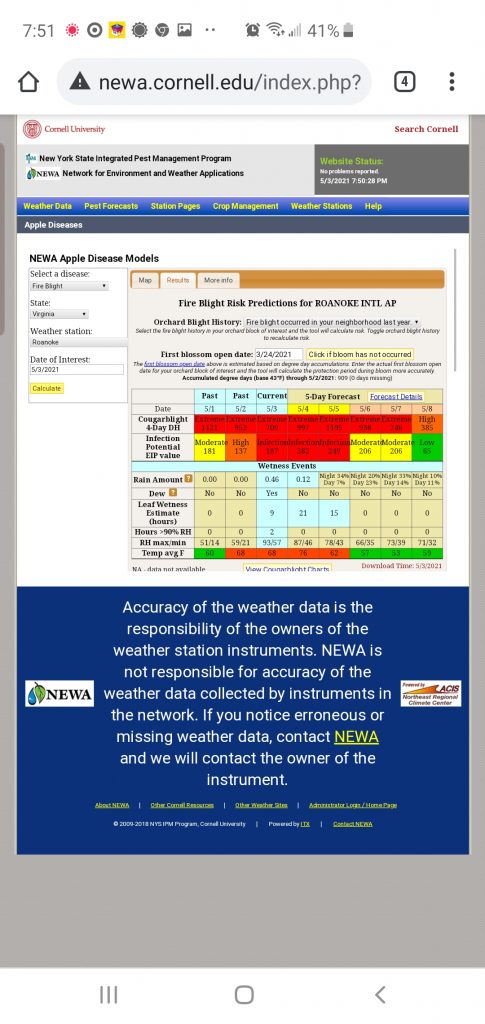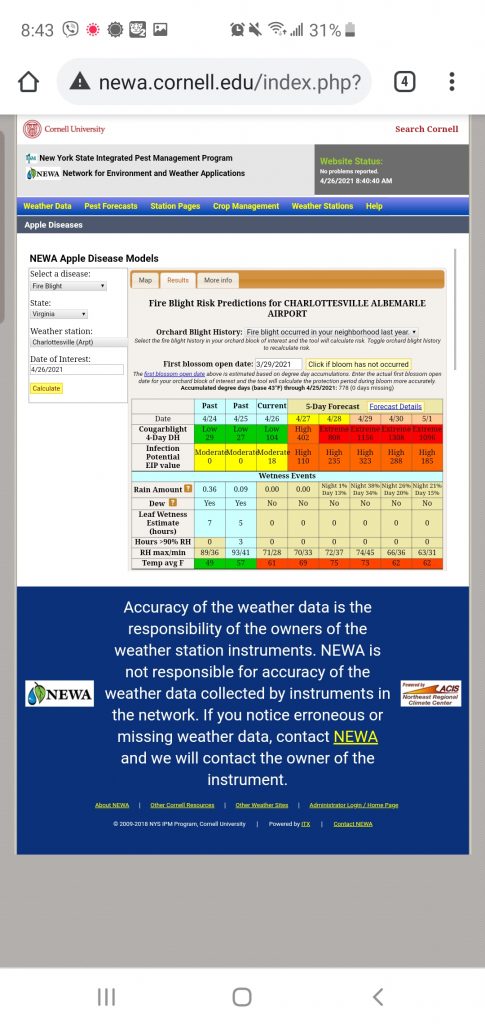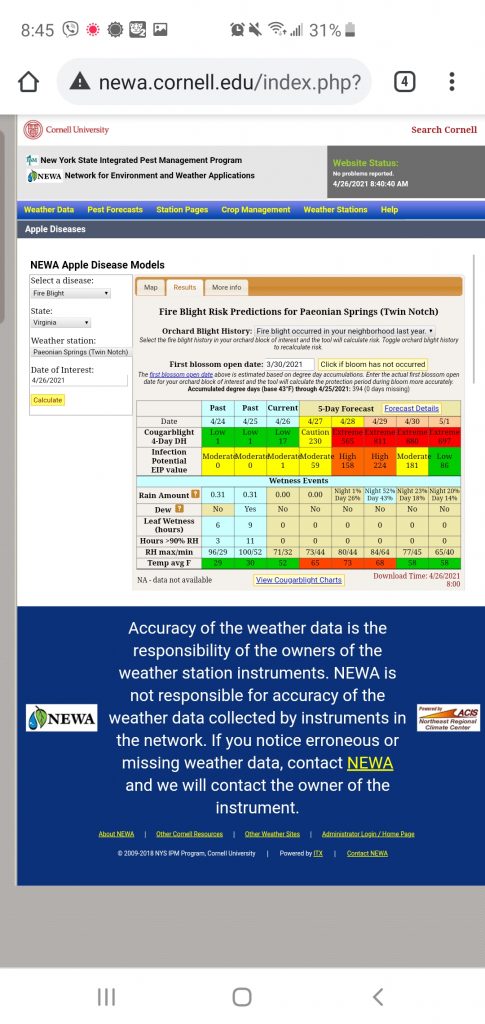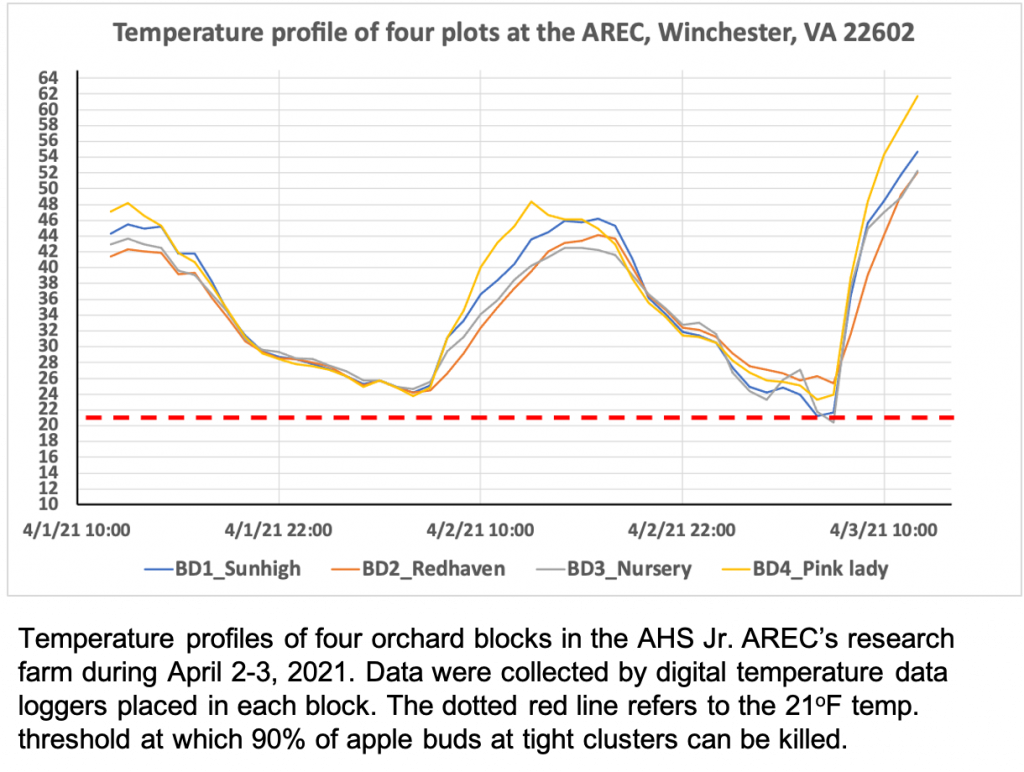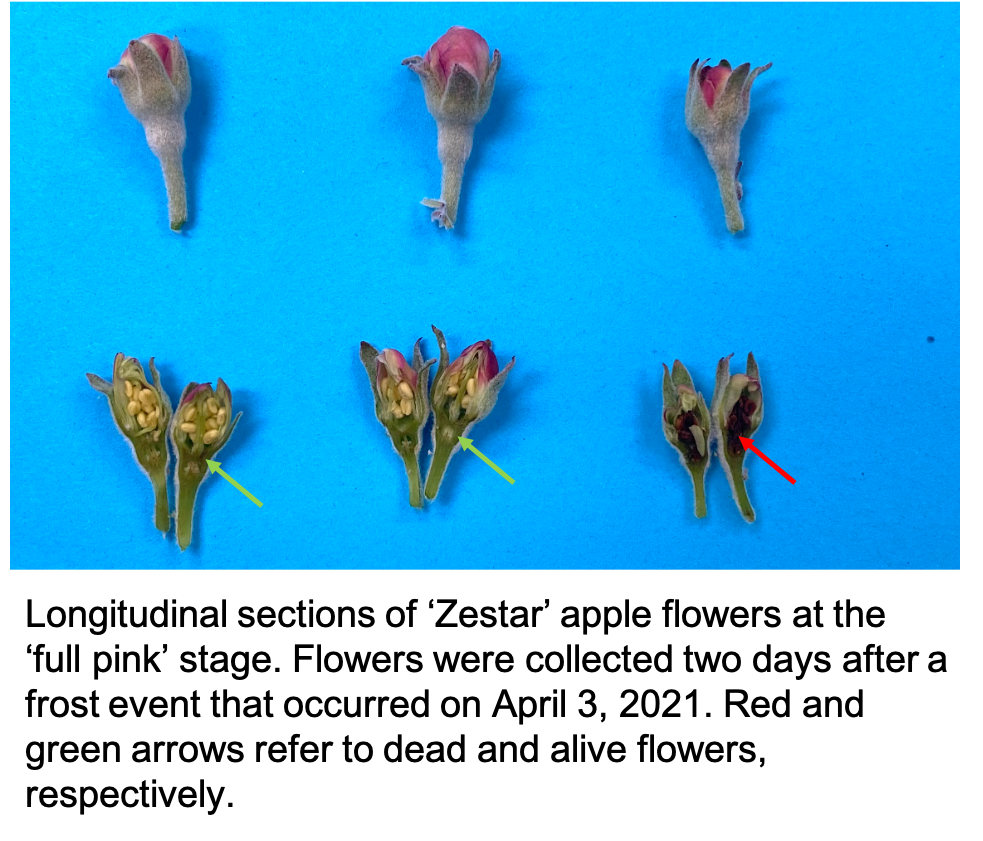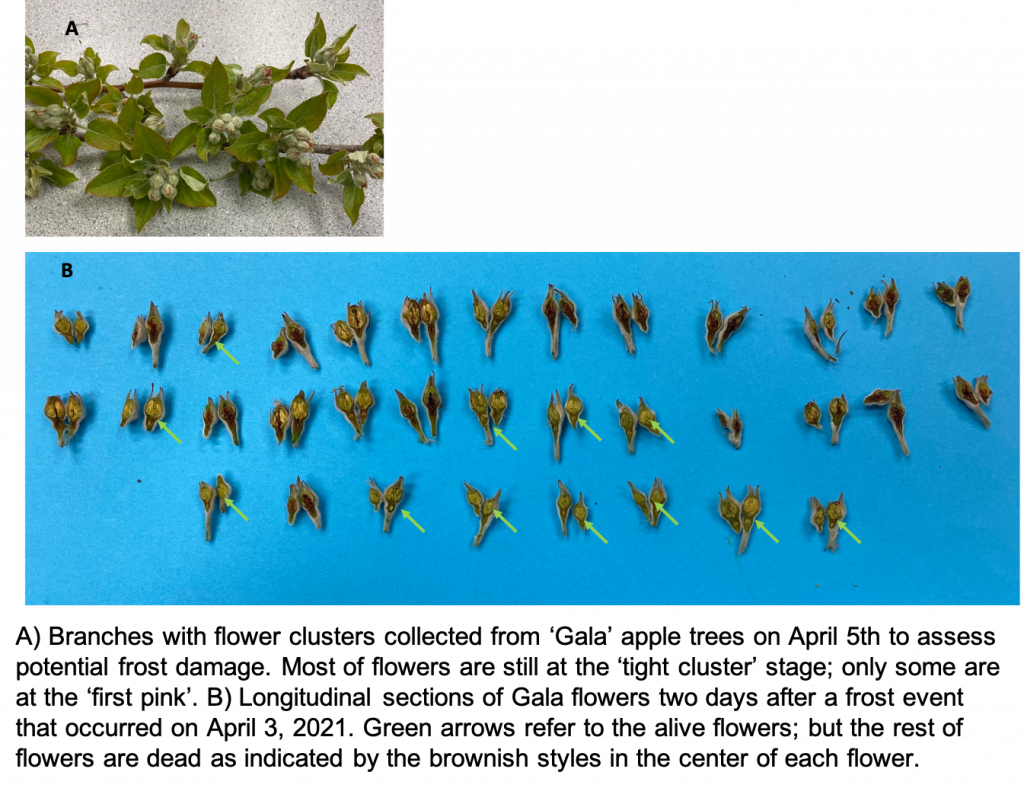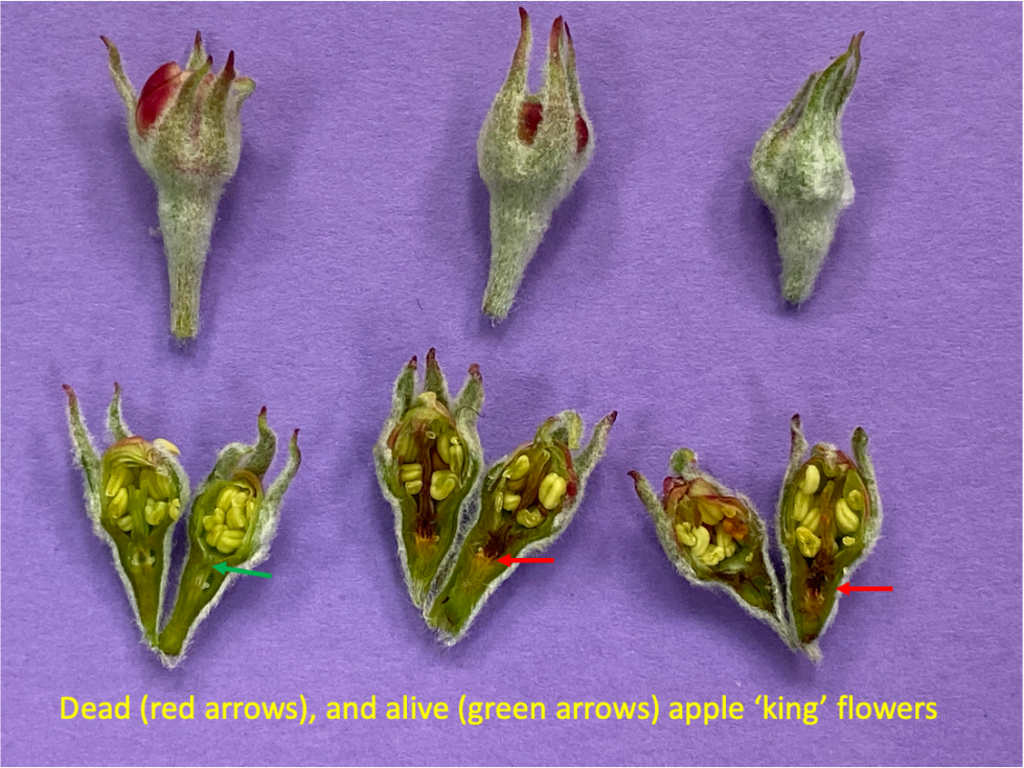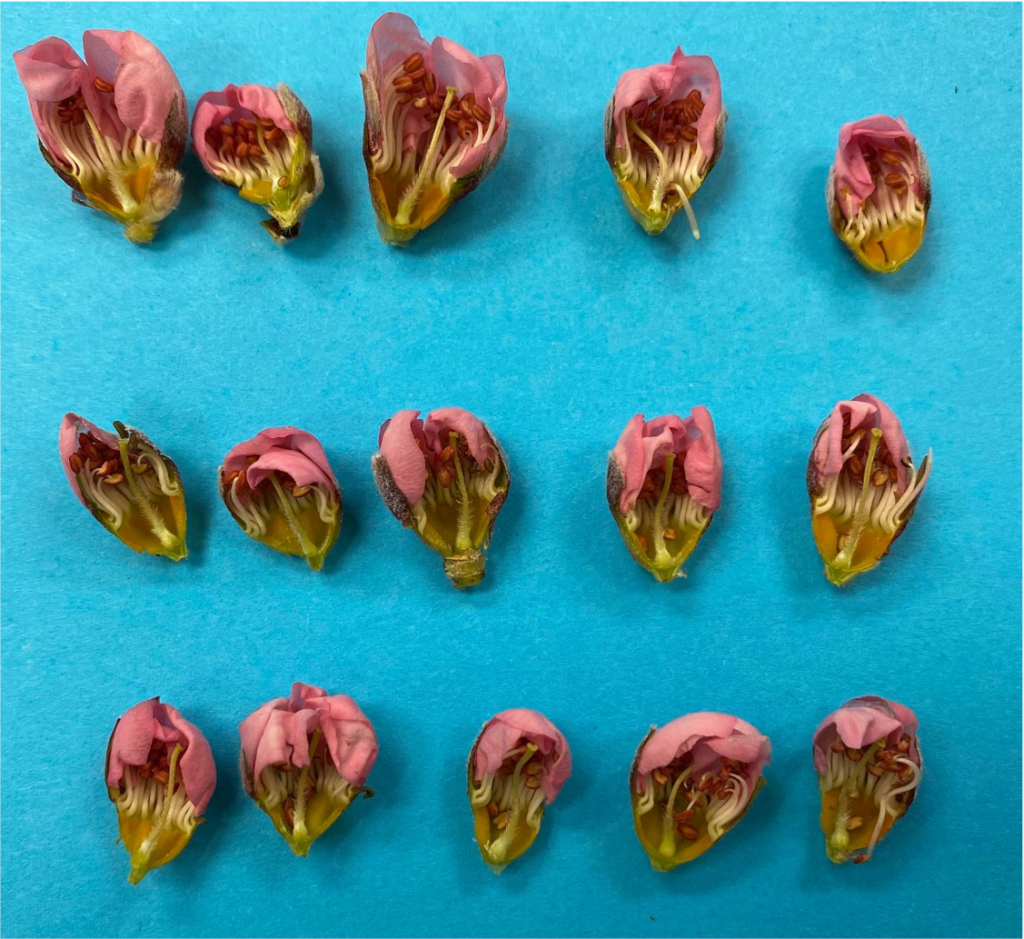Our fruit size averages for ‘Gala’, ‘Red Delicious’ and ‘Honeycrisp apples in Winchester are 15.66, 14.9 and 13.23 mm, respectively. If you applied thinning treatments on May 2 or 4, you should be able to see thinning responses by now. Fruitlets to be abscised will be loose and easily pulled off. In order to assess the response of thinning applications applied on May 4, we marked the fruitlets of 10 clusters of Gala, Honeycrisp and Reds and tracked their sizes in the last three days using a digital caliper. The idea behind this was to monitor the fruit growth rate and determine how many fruitlets will eventually abscise. Fruitlets to be abscised are believed to have a growth rate that is less than 50% of the fastest growing fruit on the tree. For instance, the fastest growth rate for Gala in the past three days was 0.6 mm per day. A fruit in the cluster that shows less than 0.3 mm/day will likely abscise soon. Based on this, we have found that our thinning applications on May 4, will result on 50%, 67%, 82% abscission rate for Reds, Gala and Honeycrisp, respectively. On other words, we should expect more triples, doubles and singles/cluster for these three cultivars, respectively. Our per acre thinning rates for Gala and Reds were (64-96 fl oz of Exilis + 1 qt of Sevin + 1 pt of Regulaid). For Honeycrisp, our rate was (4.5 oz of Refine + 1 qt of Sevin + 1 pt of Regulaid). If you applied similar rates on the same day for the same cultivars, your responses will be likely the same.

If, after assessing thinning responses in your orchard, you still feel that another thinning application is required, it’s still possible to apply 6-BA and NAA applications until your average fruit sizes are ~ 18 mm. NAA would likely result in better thinning responses at this stage. As shown in the figure below, the carbohydrate model predicts carbohydrate surplus in the next three days and therefore the recommendations are to increase the rate of thinning materials by 30%.
For cultivars exceeding an average fruit size of 20 mm , NAA and 6-BA applications won’t be effective. If more thinning is required, the only chemical option available would be ethephon. You will find more information about rescue thinning by ethephon in the following blog post (https://blogs.ext.vt.edu/tree-fruit-horticulture/2020/05/20/apple-rescue-thinning-by-ethephon/).




